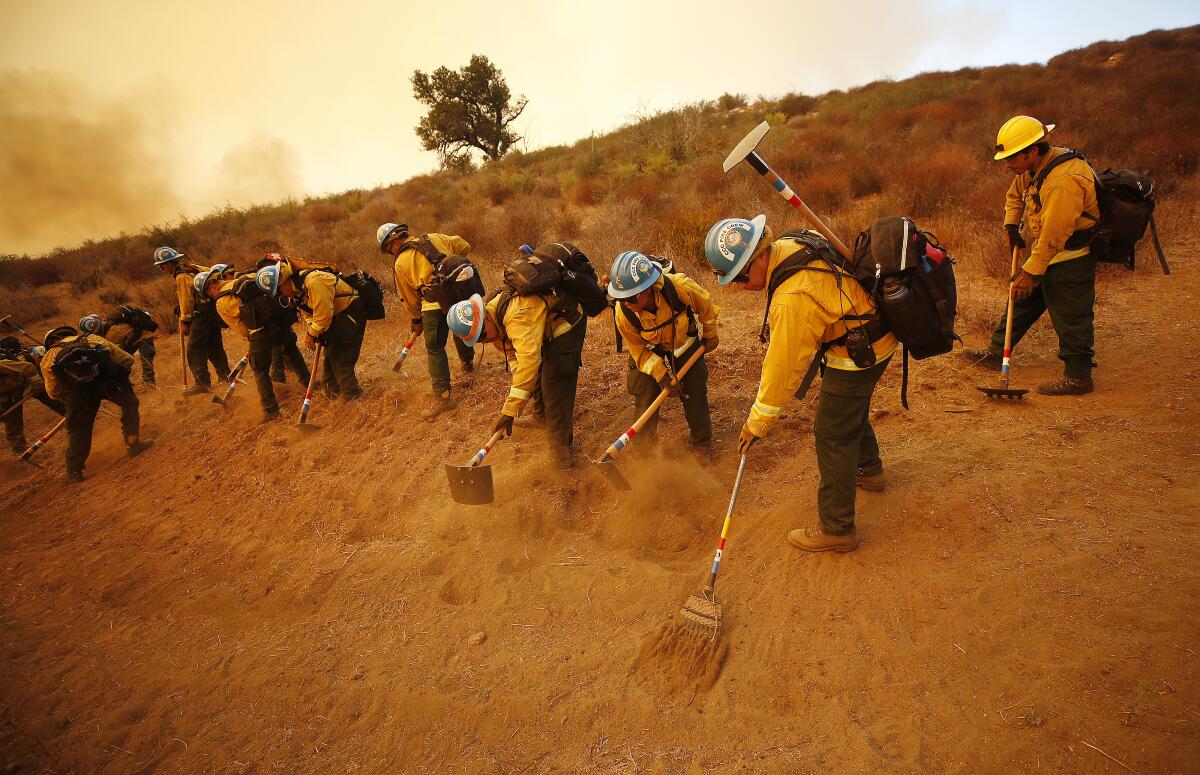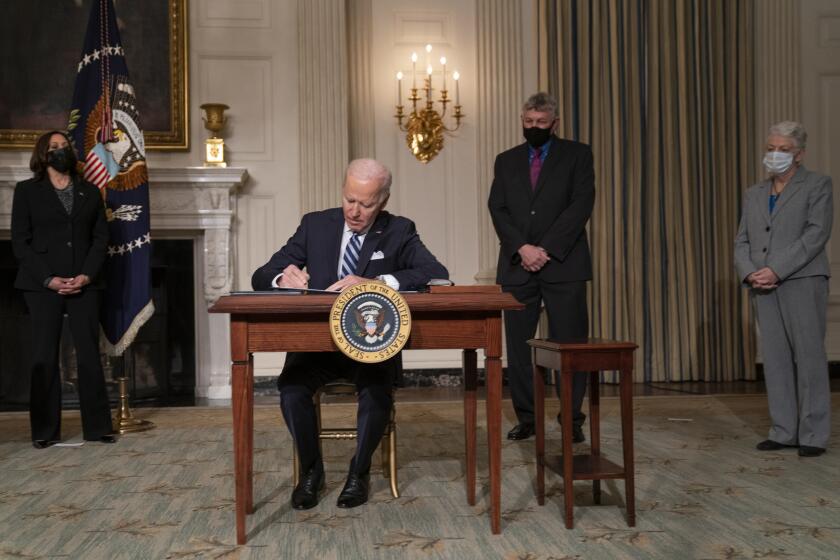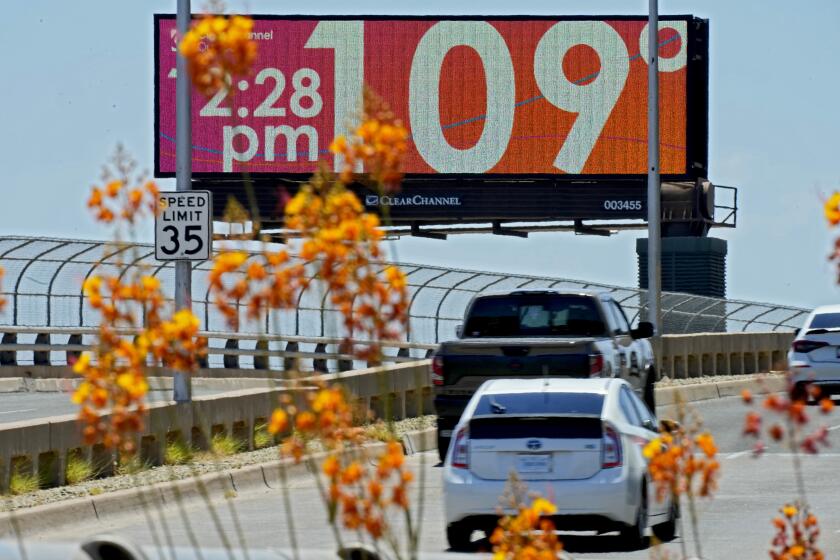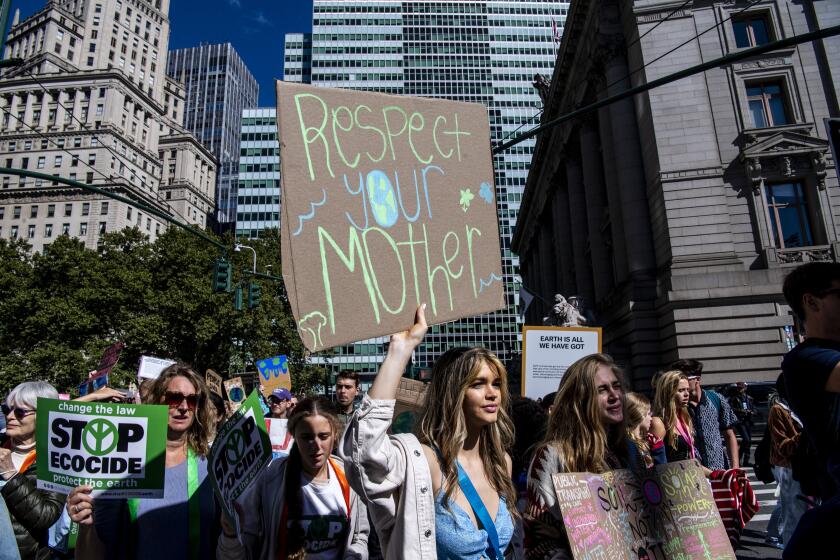Will Biden’s new American Climate Corps match the success of the California Conservation Corps?

- Share via
On Wednesday, President Biden used his executive power to establish the American Climate Corps, which will employ and train 20,000 young people in the work of climate resilience.
Similar to but more modest than the famed CCC — the Civilian Conservation Corps established by Franklin D. Roosevelt in 1933 during the Great Depression — the ACC can provide young people with long-term job skills while accelerating the country’s transition to renewable energy.
President Biden’s Civilian Climate Corps could provide jobs and crucial environmental restoration projects, but the details will matter.
Biden had hoped an updated, climate-focused version of FDR’s corps would be a provision in the Build Back Better legislative efforts he introduced at the beginning of his term. That agenda got watered down, with the Climate Corps among the losses. Republicans, and a few Democrats — notably Sen. Joe Manchin (D-W.Va.) — attacked it as a waste of money and “pure socialist wish fulfillment.”
The corps’ enemies, however, never questioned that it would be effective. That’s because California proved the value of a modern CCC years ago.
The California Conservation Corps, started in 1976 by then-Gov. Jerry Brown, has a current roster of 1,634 members, mostly between the ages of 18 and 29, who typically serve for about a year. They join front-line battles against climate-emergency wildfires and floods, restore river habitat, “manage” forests, build and maintain wilderness trails, and retrofit homes, schools and businesses with solar panels and other forms of clean energy through state contracts.
The corps tallies its achievements with a range of metrics. Since its inception, for example, its members have planted 24.6 million trees, improved national and state parks to the tune of 11 million hours of work, and filled more than 3.5 million sandbags during floods and storms.
Some people say the best way to battle climate change is with optimism. Here’s why that won’t work.
The payoff has been good for California, but it’s personal too. If new corps members don’t have a high school degree (about 15% to 20% don’t), they’re required to get one through the corps’ school partnerships. That schooling adds 10 hours to their 40-hour work week and opens new opportunities for more training and scholarships. California Conservation Corps alumni have gone on to be professional firefighters, hydrologists, electricians and park rangers.
Over the last few years, I’ve watched corps crews take chain saws to burned “hazard trees” at a state park east of Lake Tahoe, clear road obstructions during a storm, and cut fire lines under the direction of Cal Fire in Butte County.
One of the chain saw crew members, Elizabeth Wing, who was 21 when we met, summed up her experience with a joke: “We’re sure living up to the promise.” She was referring to the guarantee contained in the corps motto: “Hard work, low pay, miserable conditions, and more!” The “more” in the motto works out differently for every corps member.
“I was just drifting job to job and wanted to be part of something larger than myself,” recalled 26-year-old corps firefighter Luie Valez. “I haven’t looked back since.”
Scientists are starting to do research on “climate intervention” in case we don’t cut fossil fuel use and global warming catastrophes worsen. But geoengineering carries huge risks, including destabilizing the climate.
“I’ve had a lot of crappy jobs, but not this one,” agreed Martin Castellon, who was raised in Tijuana and San Diego, and spent his 26th birthday shoveling snow for the corps at its residential center in Tahoe.
“The thing is it’s not a bunch of troubled youth like a lot of people think,” adds John Alviso, 24, another firefighter and a former Army reservist. “It’s people who want to learn and get a career and are willing to work hard to do that.”
Bruce Saito, the California corps’ director, expects his organization and more than 150 similar ones around the nation to “benefit from Biden’s incredible move and action.” He anticipates “dedicated grants to each state to strengthen and advance the work, [and] enrollment service opportunities for thousands of young folks to serve and address climate issues not just for California.”
While thousands prepare to march in New York City with a clear demand to protect the environment for future generations, some of those in power are talking about ending only “unabated” emissions.
Biden’s use of executive power to resuscitate his Climate Corps idea is in part a response to young voters’ climate fears and frustrations. When he greenlighted the Willow oil drilling project in Alaska earlier this year, the backlash was immediate from young voters and environmentalists. The national ACC effort, which so far consists of a recruitment website, may help motivate a cohort Biden badly needs in 2024.
On the other hand, the ACC is guaranteed to draw ongoing flak from the same forces that zeroed it out of the Inflation Reduction Act last year. After all, Republican leader Sen. Mitch McConnell (R.-Ky.) claimed during the legislation battles that the corps idea was a way to “bully every state to become more and more like California.”
Replace the word “bully” with “inspire” and I have to hope that is exactly what happens.
David Helvarg is a writer; executive director of Blue Frontier, an ocean policy group; and co-host of “Rising Tide: The Ocean Podcast.”
More to Read
A cure for the common opinion
Get thought-provoking perspectives with our weekly newsletter.
You may occasionally receive promotional content from the Los Angeles Times.













